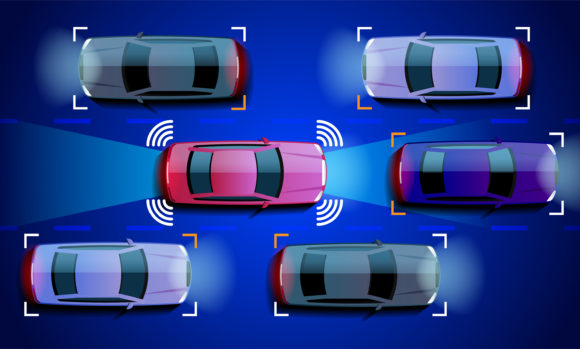Auto insurance should continue to be the primary compensation model for accident victims as the driving population transitions to and then fully adopts autonomous vehicles, according to the insurer that issued the nation’s first auto liability policy in 1897.
“This means that vehicle owners should be required to purchase and maintain adequate insurance for their AV [autonomois vehicle], whether it is a personal, ride-share or company-owned vehicle. And, coverage limits should be high enough to account for more expensive technology in AVs,” the long-time insurer says.
That’s the view in a white paper, “Insuring Autonomy: How auto insurance can adapt to changing risks,” released by The Travelers Institute, the public policy division of The Travelers Companies, applauding the safety advances of AVs while advocating for using the current auto insurance system, both personal and commercial, to compensate crash victims, provide legal standards, encourage safety, and develop new products as more vehicles become autonomous.
“The current insurance structure is already designed to adapt to evolving risk environments and would minimize regulatory uncertainty, market disruptions and consumer confusion,” the report says.
The report says that relying auto insurance for coverage – regardless of vehicle type – “will also help to ensure consistency during the long period in which AVs and driver-operated vehicles share the road” and would efficiently handle general risks such as weather or theft.
While research suggests the adoption of autonomous driving technology will lead to fewer accidents, collisions that do occur will likely result in costlier repairs and raise difficult questions relating to driver and manufacturer liability, victim compensation and data collection, the report states.
The report says the current auto insurance system offers a “high level of certainty and stability” for consumers, businesses, regulators and legal systems. It covers all drivers and vehicles with some liability protection and includes a “robust legal and regulatory infrastructure” that works for consumers and providers.
The paper maintains that the current auto system that offers clear legal standards and expectations could accommodate AVs as well as non-AVs as they share the road and it warns about having a maze of compensation schemes.
“If AVs and non-AVs are governed by different primary insurance structures or different liability standards, the resulting consumer confusion and regulatory/enforcement uncertainty will increase expenses associated with contentious liability determinations and market disruptions,” the report says. “Dividing the market in such a way would create a veritable patchwork on the roadways with respect to who is covered, for what, and under which regulatory and legal framework.”
The current auto insurance industry also has distribution systems in place and pricing and underwriting that can shift to include both driver-based and vehicle-based systems, the authors write.
Keeping the current framework would mean having insurers continue to play their traditional role in risk mitigation “by sending pricing signals vis-à-vis premium differentiation among covered autos to encourage AV technological improvements.” According to the report, insurers would also be in a position to develop new products to meet new risks.
The report also advocates for having the insurance industry play a central role in policymaking to develop a “uniform legal and regulatory framework” for autonomous vehicles.
“Ensuring that a clear risk transfer mechanism is in place will help facilitate the development of autonomous vehicles and the improved safety we expect they will bring to our roads,” said Michael Klein, executive vice president and president, Personal Insurance at Travelers.
The white paper offers recommendations to facilitate an effective auto insurance system for the future:
- Develop a model state law relating to autonomous vehicle insurance that builds on the current state-based regulatory and oversight structure.
- Require vehicle owners — including personal, ride-sharing and company-owned vehicles — to purchase and maintain adequate insurance.
- Provide for sufficient coverage to account for the more expensive technology used in autonomous vehicles.
- Establish strong cybersecurity requirements for autonomous vehicles, including appropriate data-sharing protocols.
- Utilize insurers’ extensive consumer communication programs to help educate customers and the public on autonomous vehicle safety.
- Ensure representation of the insurance industry in policymaking and stakeholder forums.
Source: The Travelers Institute, “Insuring Autonomy: How auto insurance can adapt to changing risks”
Topics Trends Auto Legislation Tech Market
Was this article valuable?
Here are more articles you may enjoy.



 Door of Swiss Bar Where 40 Died in Fire Was Locked, Says RTS
Door of Swiss Bar Where 40 Died in Fire Was Locked, Says RTS  Alliant Latest to Sue Howden US Over Alleged ‘Smash-and-Grab’ Poaching
Alliant Latest to Sue Howden US Over Alleged ‘Smash-and-Grab’ Poaching  CEOs on Guard as Trump Rattles Companies With Series of Edicts
CEOs on Guard as Trump Rattles Companies With Series of Edicts  Consumer Acceptance of Telematics Widens, Says Survey
Consumer Acceptance of Telematics Widens, Says Survey 

